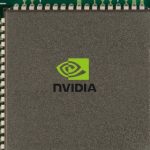Automotive safety and convenience expectations may shift as Tesla hints at a timeline for hands-off driving. At the recent Annual Shareholder Meeting, CEO Elon Musk stated that drivers could soon be able to text while behind the wheel of a Tesla, suggesting the Full Self-Driving (FSD) suite is nearing a new milestone. This bold claim, paired with the ongoing advancements in the FSD lineup—including the latest rollout to the Cybertruck—reflects the company’s persistent push toward Level 5 autonomy. As regulators and consumers track Tesla’s progress, questions remain about when, and under what conditions, widespread autonomous functionality will truly materialize.
Earlier announcements about FSD readiness from Tesla have been met with cautious optimism, as projected timelines have repeatedly shifted. Previous iterations of Tesla’s FSD suite advertised significant improvements, yet drivers were still required to actively monitor the road. Some skepticism remains due to Tesla’s history of optimistic projections and the complexity of achieving full autonomy, as seen in their staged rollout of advanced driver assistance features. Competitors in the autonomous vehicle market have also experienced delays in delivering Level 5 capabilities at scale, highlighting the engineering and regulatory hurdles ahead.
What Will FSD v14.1 and v14.3 Actually Enable?
Tesla’s current FSD v14.1.5 requires the operator to remain engaged and oversee driving tasks. The company suggests that FSD v14.3 could offer such reliability that a driver might “pretty much fall asleep and wake up at your destination.” CEO Musk reiterated,
“In the next month or two, we’re going to look at the safety statistics, but we’re going to allow you to text and drive, essentially.”
However, approval of these capabilities hinges on positive safety data and successful incremental updates to the software.
How Close Is Tesla to Level 5 Autonomy?
The deployment of the new FSD suite across all models, including the recent integration with Cybertruck, marks tangible progress toward Tesla’s vision of full autonomy. Despite this, official documentation and public statements continue to categorize the system as supervised driving. The company has not yet received regulatory clearance for completely driverless operation, and most jurisdictions still require a licensed and attentive driver in the seat.
What Does This Mean for Drivers and Industry Standards?
Consumers may soon be allowed to text while the car handles the road, pending safety approval. This change is expected to prompt further industry debate around driver responsibility and the ethics of offloading attention from the road to the vehicle’s AI. Musk also commented on the technology’s trajectory, stating,
“When we get to v14.3, you can pretty much fall asleep and wake up at your destination.”
If realized, such features would significantly alter both driving habits and public perception of safe use of semi-autonomous vehicles.
Tesla faces both technical challenges and regulatory scrutiny as it aims to progress from advanced assisted driving to full autonomy. The company’s roadmap features incremental software updates, each promising enhanced reliability. While recent progress, such as pilot robotaxi operations in Austin without a person in the driver’s seat, signals momentum, the leap to driver disengagement and full road autonomy will require approval that meets both legal requirements and real-world safety benchmarks. Consumers, industry watchers, and lawmakers will be monitoring the data Tesla collects in the coming months to assess the true safety and feasibility of these announced features. For those interested in autonomous vehicle technology, it will be useful to follow official releases, safety statistics, and regulatory responses that shape how—if at all—these capabilities become a reality for everyday drivers.









